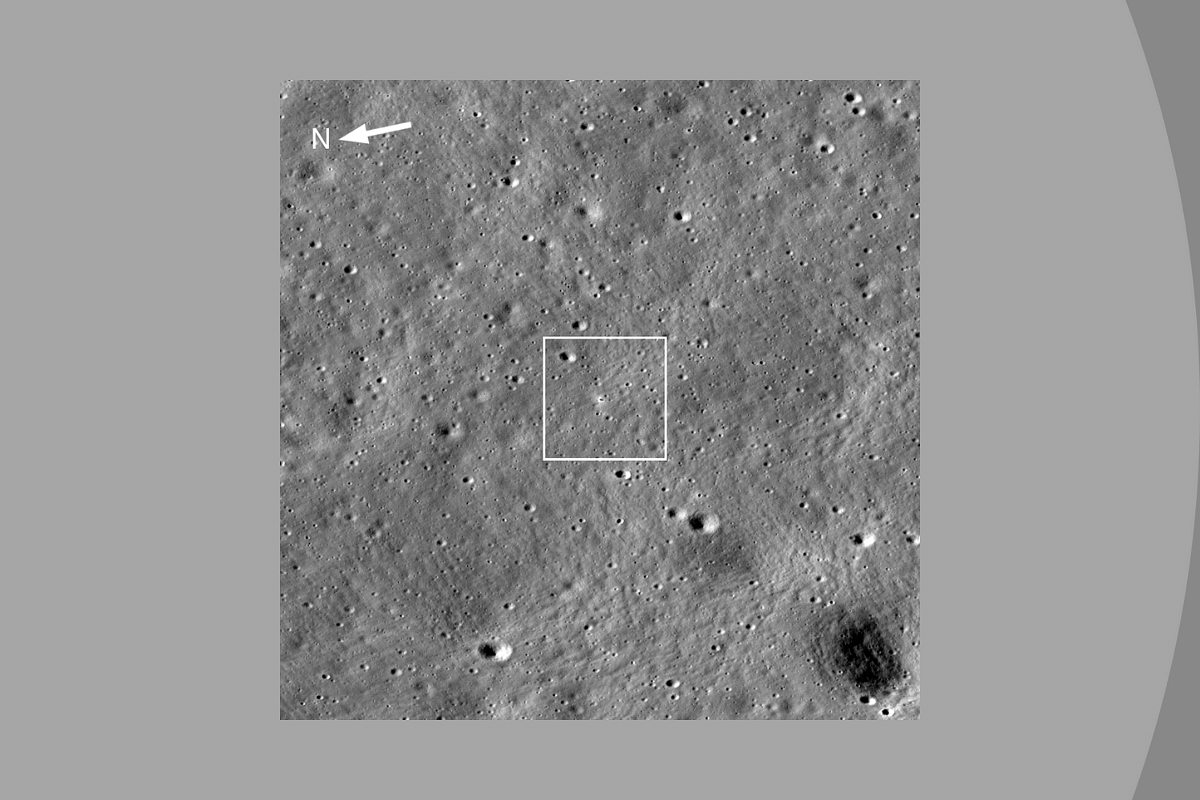Science
Chandrayaan-3: NASA's Moon Orbiter Snaps Vikram Lander At Shiv Shakti Point

Chandrayaan-3 landing site imaged, marked, and released by NASA (Image: NASA's Goddard Space Flight Center/Arizona State University)
The Vikram lander is truly a lunar celebrity now. Images have been coming thick and fast of India's lunar lander that is now asleep awaiting the next lunar sunrise on 22 September.
The latest snap of the lander comes from the Lunar Reconnaissance Orbiter (LRO) of the National Aeronautics and Space Administration (NASA).
The LRO has imaged the Chandrayaan-3 landing site on the Moon’s surface, christened Shiv Shakti point days after the successful landing.
The Shiv Shakti point is located about 600 kilometres from the Moon's south pole.
The LRO camera captured the landing site with the lander at its centre four days after the Chandrayaan-3 touchdown, which occurred just after 6 pm on 23 August.
The camera "acquired an oblique view (42-degree slew angle) of the lander," NASA said.
Explaining "the bright halo around the vehicle," the space agency said it was a result of "the rocket plume interacting with the fine-grained regolith (soil)."
Nearly a week ago, NASA shared an image of a new crater on the Moon’s surface captured by the LRO. It was identified as the impact site of Russia’s Luna 25 mission.
NASA took a cue from an estimate of the impact point published by the Russian space agency Roscosmos on 21 August. The LRO camera was pointed accordingly and a small crater was imaged that wasn't present in the LRO's most recent image of the area from June 2022.
The new crater, photographed on 24 August, is about 10 metres in diameter.
Luna 25 experienced an anomaly that caused it to crash on the surface of the Moon on 19 August.
The LRO is NASA's lunar orbiter mission tasked with mapping the Moon's surface, with more science objectives added to its plate a year later.
The spacecraft was launched on an Atlas V rocket on 18 June 2009. It is equipped with a suite of seven powerful instruments that are helping expand the knowledge of the Moon.
The LRO is managed by NASA's Goddard Space Flight Center in Greenbelt, Maryland. Arizona State University manages and operates the LRO camera.
Support Swarajya's 50 Ground Reports Project & Sponsor A Story
Every general election Swarajya does a 50 ground reports project.
Aimed only at serious readers and those who appreciate the nuances of political undercurrents, the project provides a sense of India's electoral landscape. As you know, these reports are produced after considerable investment of travel, time and effort on the ground.
This time too we've kicked off the project in style and have covered over 30 constituencies already. If you're someone who appreciates such work and have enjoyed our coverage please consider sponsoring a ground report for just Rs 2999 to Rs 19,999 - it goes a long way in helping us produce more quality reportage.
You can also back this project by becoming a subscriber for as little as Rs 999 - so do click on this links and choose a plan that suits you and back us.
Click below to contribute.
Latest